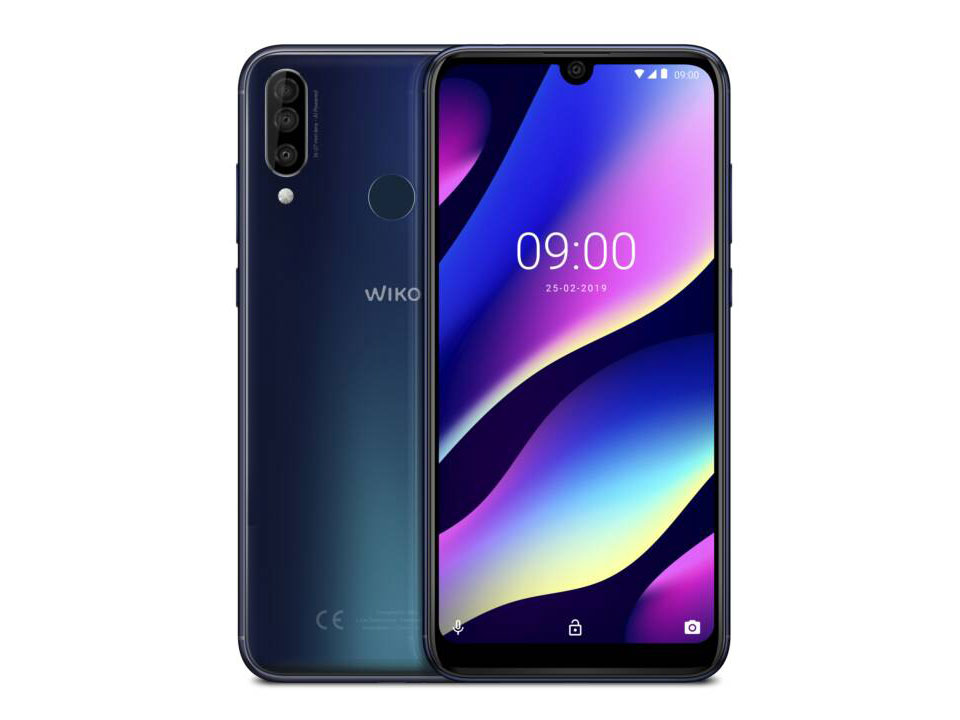The View 3 Pro is a lower mid-range smartphone from value-focused French manufacturer Wiko. It features a 6.3-inch IPS display with FHD+ resolution and a Mediatek Helio P60 chipset. Its 128Gb of internal storage can be expanded via an SD card slot.
On the imaging side of things, the device offers a triple-camera setup that includes a 12Mp wide-angle with a 27mm-equivalent focal length lens, and a 13Mp ultra-wide-angle lens that has a 16mm-equivalent field of view. The third camera is a depth sensor that is predominantly used to create the bokeh simulation in portrait mode. Wiko is a brand name that is not familiar to everyone; let’s see how the View 3 Pro fared in our DXOMARK Camera testing.
Key camera specifications:
- Triple-camera setup
- Primary: 12Mp 1/2.9″, 27mm-equivalent f/2-aperture lens, PDAF
- Ultra-wide: 13Mp sensor, 16mm-equivalent f/2.2-aperture lens
- 5Mp depth sensor
- LED flash
- 1080p at 30fps video
About DXOMARK Camera tests: For scoring and analysis in our smartphone camera reviews, DXOMARK engineers capture and evaluate over 1600 test images and more than 2 hours of video both in controlled lab environments and in natural indoor and outdoor scenes, using the camera’s default settings. This article is designed to highlight the most important results of our testing. For more information about the DXOMARK Camera test protocol, click here. More details on how we score smartphone cameras are available here.
Test summary


With an overall DXOMARK Camera score of 67, the Wiko View 3 Pro occupies a spot towards the bottom end of our ranking. Its Photo score of 69 is one of the lowest, too, and there is plenty of room for improvement for still images in almost all areas. Photos shot on the Wiko usually show good target exposure and color rendering in bright light and under typical indoor conditions. However, underexposure and desaturation are noticeable in low light. Target exposure is good when shooting with the flash on, but noise levels are high.
Autofocus performance is one of the View 3 Pro’s most serious issues, with strong instabilities noticeable both indoors and in low light. Dynamic range is also more limited than on devices higher up in our ranking, with sample shots of high-contrast scenes showing a lot of clipping in the highlight areas. Our testers also observed higher than usual noise levels in pretty much all test conditions, and image artifacts include a loss of sharpness towards the edges of the frame and a shift towards cyan in blue skies.
The Wiko does not come with an optical tele-lens, and zoom performance is poor, with a noticeable lack of detail and ringing around high-contrast edges. Despite the dedicated depth sensor, bokeh mode images look a little unnatural, with very strong blur and blocking artifacts in the background. In some images we also saw background spotlights that weren’t actually present in the scene.
When shooting with the ultra-wide lens, distortion is quite strong at the widest settings. It’s reduced once you start zooming in, but unfortunately that also changes the white balance and decreases the level of recorded detail.
The Wiko View 3 Pro scores 63 points for its video mode, again making it one of the lowest-ranked devices in our database for this category. Video clips show good white balance in bright light, and stabilization is fairly effective as well. However, as for still images, autofocus performance is sub-par, failing to trigger and refocusing constantly. In addition, exposure adaptation in changing light conditions is very abrupt and there is noticeable stepping. Just as for Photo, dynamic range is quite limited, too, and highlight clipping is visible in many clips. Levels of detail are low and noise is visible in all conditions, and our testers also observed a jello effect in the Wiko’s footage when recording while walking.
Conclusion
The Wiko View 3 Pro offers an impressive-looking spec sheet at a budget price point, but unfortunately, at least for the camera, this does not translate into an impressive performance, thus the View 3 Pro achieves one of the lowest camera scores among all the devices we have tested so far. It’s capable of recording acceptable photos and videos in ideal conditions, but in more challenging situations the camera struggles. Overall, there is quite a bit of room for improvement in all areas, making the Wiko hard to recommend to anyone who values camera performance on their smartphone—and that’s true even considering the attractive price point.
Photo
Pros
- Accurate target exposure in bright light and indoor conditions.
- Good exposure and low noise levels when shooting with flash on.
- Stable white balance in bright light.
Cons
- Strong autofocus instabilities indoors and in low light.
- Limited dynamic range results in highlight clipping.
- Visible noise in all light conditions.
- Lack of detail and ringing in zoom shots.
- Loss of acutance towards the edges of the frame and cyan shift in blue skies.
- Blocking artifacts in bokeh simulation images.
- Noticeable distortion in ultra-wide camera shots.
Video
Pros
- Fairly effective stabilization.
- Generally accurate white balance in bright light.
Cons
- Autofocus issues, including trigger failures, refocusing, and jerkiness.
- Abrupt exposure adaption, stepping, limited dynamic range.
- High noise levels and lack of detail in all conditions.
- Jello effect when recording while walking.










DXOMARK encourages its readers to share comments on the articles. To read or post comments, Disqus cookies are required. Change your Cookies Preferences and read more about our Comment Policy.